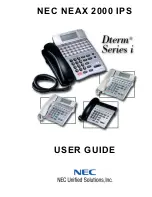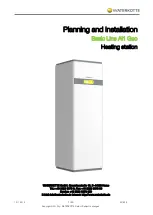
processes begin to eat away the tank’s glass
lining. In time the solar storage tank, like any
other gas or electric water heater, will begin to
leak. The process is not reversible and the tank
must be replaced.
System temperatures and water quality affect
the rate at which the anode rod is consumed.
In general, the higher the average system tem-
perature, the faster the rate of corrosion. By
changing the anode rod after the fifth year of
system operation, and every three to five years
thereafter, it is possible to extend the life of the
solar storage tank.
9.3 The solar storage tank also should be
flushed annually to minimize sediment build-up
on the bottom of the tank. If you live in an area
with high mineral content in your water, flush
the tank on a semi-annual basis. Disconnect the
power to the solar tank at the circuit breaker or
time switch (if present) before flushing. Turn
the controller to the off position.
Open the flush valve on the bottom of the stor-
age tank (COMPONENT #15, FIGURES 15A;
15B; 16A; 16B; 17A; 17B ) and drain a suffi-
cient volume of water to eliminate the sediment.
After the procedure is complete make sure the
tank is completely full of water before restoring
power to the thermostat and heating element.
Turn the controller to the “on” position.
9.4 If you live in a dusty climate it is a good
idea to wash off the dirt that settles on the col-
lector glass once a month. Note: Be sure the col-
lector glass is cool before cleaning. When the
collector glass is clean it allows the collector to
maintain a high level of thermal performance.
9.5 Check the exterior pipe insulation annu-
ally and patch or repair any exposed surfaces or
degraded areas. Repaint as necessary with high
quality exterior latex paint.
9.6 In the unusual instance of collector glass
breakage, the glass should be replaced immedi-
ately. This will reduce the likelihood of water
accumulating inside the collector and deterio-
rating the insulation. Contact your installation
contractor.
9.7 If you detect a HTF or water leak, or the
collector loop pressure drops unexpectedly,
contact your installation contractor immedi-
ately to diagnose the problem and recharge the
system.
9.8 If it’s been a sunny day and you don’t have
hot water, make sure that the controller is set
in the automatic position. If the controller is
properly set and the pump has not been running,
unplug the line cord from the controller recep-
tacle and plug the pump directly into a nearby
115 VAC outlet. If the pump does not run it
may need to be replaced. If the pump does run
when plugged directly into the wall outlet, the
problem may be located in the controller or one
of the temperature sensors. Contact your instal-
lation contractor for service.
9.9 If you have a full tank of hot water before
bed and the solar storage tank is cold in the
P.27
22
24
25
26
22
24
25
26
Solar Preheat Fig 19a
100% Utility Power Fig 19b
fig. 19a
SOLAR PREHEAT
















































